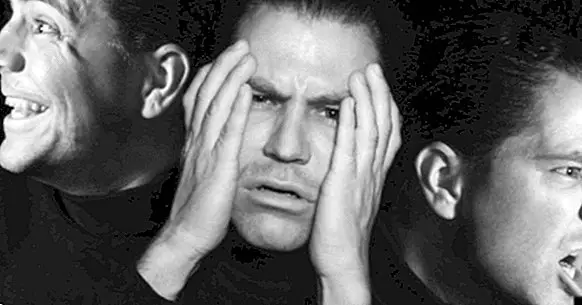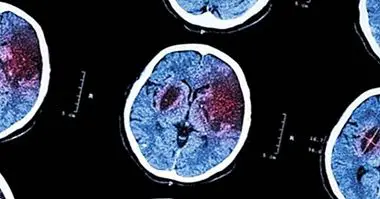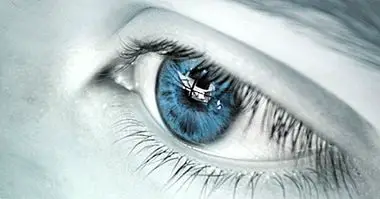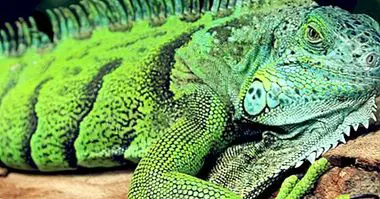Types of Bipolar Disorder and its characteristics
Bipolar disorder is a serious and complex disorder that presents a wide variety of symptoms. There are different types of this disorder and its symptoms can also be presented along with other psychopathologies like schizophrenia.
In today's article we are going to review the different types of bipolar disorder and their characteristics, since the diagnosis of this mental illness can be complicated for mental health professionals.
A disorder that has been unduly diagnosed
Some experts have long been warning that bipolar disorder is being overdiagnosed. Therefore, the Faculty of Medicine of the University of Brown, in the state of Rhode Island, decided to study this phenomenon, that of the overdiagnosis . His conclusions were clear: About 50% of cases diagnosed with Bipolar Disorder could be wrong .
The investigation was carried out with the analysis of the data provided by interviews with 800 psychiatric patients using a comprehensive diagnostic test. Structured Clinical Interview for DSM Disorders. But what are the causes of this overdiagnosis? Researchers think that there is a greater propensity for specialists to diagnose bipolar disorder versus other more stigmatizing disorders and for which there is no clear treatment.
On the other hand, there is another hypothesis that states that the fault lies in the aggressive advertising by pharmaceutical companies, since they have a great interest in the commercialization of the drugs used in the treatment of this pathology. Something that also happens with Attention Deficit Hyperactivity Disorder (ADHD).

Symptoms of Bipolar Disorder
The primary symptoms of bipolar disorder are unpredictable changes in mood , and the most characteristic are the symptoms of the state of mania and the depressive state.
Symptoms of the mania phase
Symptoms of mania include Excessive excitement, perception of greatness, irritability, lack of sleep, noticeable increase in energy, high sexual drive and verbiage . During the mania phase individuals can abuse drugs, carry out risky behaviors and make harmful and negative decisions for them, such as quitting work.
Symptoms of the depressive phase
Symptoms of the depressive phase include sadness, anxiety, irritability, loss of energy, uncontrollable crying, changes in appetite that lead to weight loss or gain, excessive need to sleep, difficulty making decisions and suicidal thoughts.
In addition, manic and depressive symptoms may appear together. When this happens it receives the name of "mixed episode".
Types of Bipolar Disorder
There are different types of bipolar disorder characterized by different degrees of depressive or manic symptoms. The five types of bipolar disorder are: cyclothymia, bipolar disorder type I, bipolar disorder type II, bipolar disorder not specified and bipolar disorder rapid cycling.
Cyclothimia
The cyclothymia it is a variant of bipolar disorder but its symptoms are less severe , that is, that people suffering from this disorder have mild phases of depression and hypomania. Individuals are diagnosed after persisting symptoms for at least two years.
Learn more about cyclothymia in our post: "Cyclothymia: the mild version of Bipolar Disorder"Type I Bipolar Disorder
A person affected by the Type I bipolar disorder has had at least one episode of mania during his life , because this type of bipolar disorder is characterized by the presence of episodes of mania or, in some cases, mixed, and not necessarily the subject has suffered a depressive phase. Now, approximately 90% of the cases the patient attends both phases (mania and depression).
Type II Bipolar Disorder
The bipolar disorder type II it is diagnosed when the subject has suffered one or more episodes of major depression and at least one episode of hypomania . Occasionally, bipolar disorder type II can be confused with major depression, so it is essential to make a correct diagnosis for a better recovery of the patient.
Bipolar disorder not specified
It may be that bipolar disorder can not be classified within the three previous ones (cyclothymia, type I and type II) for different reasons. For example, when episodes of hypomania are recurrent.There are situations in which the psychologist or psychiatrist has come to the conclusion that there is a bipolar disorder, but is unable to determine whether it is primary, due to a medical illness or because it was induced by a substance.
The most frequent subtypes of bipolar disorder are the following:
- Very rapid alternation (in days) between manic symptoms and depressive symptoms that do not meet the criterion of minimum duration for a manic episode or major depressive episode.
- Recurrent hypomanic episodes without intercurrent depressive symptoms.
- A manic or mixed episode superimposed on a delusional disorder , a residual schizophrenia or a psychotic disorder not specified.
Rapid Cycle Bipolar Disorder
Individuals with rapid cycle bipolar disorder experience four or more episodes of mania or depression in the one year period. About 10% to 20% of patients with this disorder suffer the "fast cycling" type .
Erroneous beliefs about Bipolar Disorder
Although bipolar disorder is well known to the population, at least as far as the name is concerned, There is a great disinformation about this psychopathology . Many people think that this disorder is characterized by sudden mood swings in the same day or by emotional ups and downs.
In fact, bipolar disorder is a serious disorder that, like schizophrenia or paranoid disorder, requires the administration of drugs and vigilance in the life habits of patients to prevent relapse. Therefore, if you want to know more about bipolar disorder and be well informed, we invite you to read our article:
"Bipolar disorder: 10 characteristics and curiosities you did not know"


















